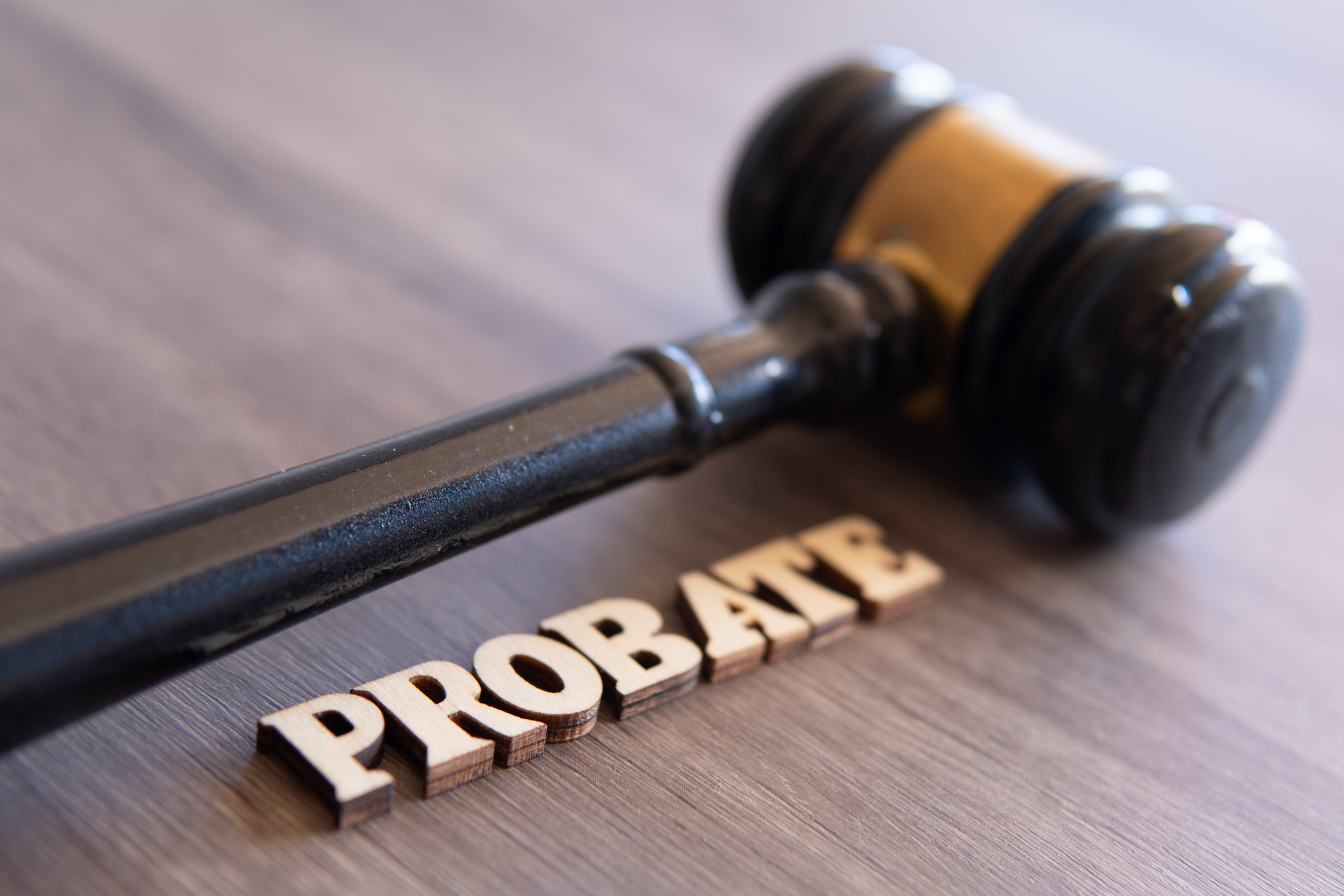When Does a Nest Egg Become a Ticking Tax Bomb?
Retirement savers with big bucks in traditional IRAs and pretax 401(k)s could face huge tax bills when RMDs kick in. One potential solution? A Roth 401(k).


One of the biggest benefits of participating in a 401(k) or other defined contribution plan is that contributions can be deducted from your paycheck on a pretax basis, which can lower your taxable income for the year.
If you’ve been able to make significant pretax contributions over many years and you’ve received generous matching and/or profit-sharing contributions (in addition to the benefits of compounding growth), chances are you’ve built a sizable nest egg.
Now, many people say you can never save too much money for retirement. But is there a risk if your traditional IRA and pretax 401(k) accounts get too big?
From just $107.88 $24.99 for Kiplinger Personal Finance
Become a smarter, better informed investor. Subscribe from just $107.88 $24.99, plus get up to 4 Special Issues

Sign up for Kiplinger’s Free Newsletters
Profit and prosper with the best of expert advice on investing, taxes, retirement, personal finance and more - straight to your e-mail.
Profit and prosper with the best of expert advice - straight to your e-mail.
Possibly. Especially if you won’t need all of that money to live on.
That’s because at age 73, you’ll have to start taking required minimum distributions (RMDs). (This age will increase to 75 in 2033.)
RMDs for a given year are calculated as a percentage of the value of your account at the end of the previous year. This percentage gradually rises each year.
These distributions count as taxable income. If the value of your pretax account is very large, a single RMD, in combination with taxable income you receive from other sources — such as Social Security — could dramatically increase your yearly tax bill.
Let’s look at a hypothetical example.
Jane could pay the price for her savings success
Jane, 72, is a senior executive with a large company. She started contributing to her 401(k) plan in 1990, when she was 38. Every year she made the maximum allowable contribution on a pretax basis, including additional catch-up contributions when she turned 50 in 2002. Over the years, her employer was very generous with matching and profit contributions.
Now Jane is about to retire. Because her account posted strong average annual returns over the years — much of it due to the exponential increase in the value of the company stock she invested in — her pretax 401(k) account was worth approximately $5 million at the end of 2023.
Since divorcing her husband 15 years ago, Jane has always lived frugally and doesn’t plan on changing her ways once she retires. She paid off the mortgage on her home several years ago. She has no debt and could live comfortably off her monthly Social Security checks, payments from a previous employer’s pension plan and dividend and interest income from her bank and taxable investment accounts.
She had always planned on using RMDs from her 401(k) to support her favorite charities and leave whatever was left in the account to her two adult children when she passed on.
A tax surprise
Jane never knew exactly how much her annual RMD would be, so for planning purposes, she made a trial run at figuring it out. With one year left before she’ll be forced to take RMDs, she finally got around to calculating what her first RMD would have been in 2024 if she had taken it. She was shocked.
Based on the RMD rate calculated using the IRS Uniform Lifetime Table, her distribution would have been $188,679. With her investments continuing to do well in 2024, her first real RMD is likely to be even higher when she takes it at age 73 in 2025.
Not even counting Social Security, this amount alone could put her in the 24% federal tax bracket — the same tax bracket she’s been in as an employee.
What’s even more concerning is that once she retires, she’ll receive at least $50,000 in additional yearly taxable income from her defined benefit plan payments and bank and brokerage accounts. If this combined amount pushes her adjusted gross income above $191,950, she could be elevated to the 32% federal tax bracket.
This higher income could have other unanticipated consequences. She was already paying taxes on 85% of her Social Security benefits, which she started taking at age 70. And once she enrolls in Medicare (which she delayed doing because she was covered by her employer’s health plan), her Medicare income-related monthly adjustment, or IRMAA, could raise her monthly Part B premium to $559, compared with the baseline premium of $174.
Fortunately, Jane will have enough money to pay these higher tax bills and expenses. But it wasn’t a burden she was expecting as a retiree.
A potential tax quagmire for her heirs
Even more worrisome, her 401(k) nest egg could become a huge tax liability for her two adult children, who are the beneficiaries of the account.
That’s because they’ll have to empty out the account within 10 years of inheriting it. And the IRS will require them to take annual RMDs during that 10-year period. This could hypothetically result in $100,000 or more in additional taxable income for each of them every year.
What about a Roth IRA conversion?
Distributions from a Roth IRA are tax-free as long as the owner is over 59½ and has owned the account for at least five years. If children inherit the account, they’ll still have to empty out the account within 10 years, but they won’t have to pay taxes on these distributions. And they won’t have to take annual RMDs during that period.
Because of her high income, Jane was never able to contribute to a Roth IRA when she was working. However, once she retires she could roll over some or all of her 401(k) money directly into a Roth IRA — but of course she’d have to pay the taxes she owes on the amount that she is converting.
These Roth IRA conversion amounts wouldn’t count toward meeting her RMD. In fact, she would have to take the RMD from the 401(k) account before she could make one-time or annual Roth IRA conversions.
So, if she completed a partial Roth conversion every year, this amount, combined with her annual RMD, could create an even larger tax burden. She would essentially be taking a huge tax hit today to reduce her (and her children’s) potential tax liability later on.
Now, there are certain steps Jane could take to lower her future tax bills.
She could donate the amount she receives as an RMD to a qualified charity and receive a charitable tax deduction.
And if she rolls over her 401(k) into a traditional IRA, she could use an annual qualified charitable deduction (QCD) to directly donate up to $105,000 from the IRA to her favorite charities. The QCD amount would reduce, but not eliminate, her annual RMD.
What could 'future Janes' do?
Unfortunately, the size of Jane’s 401(k) account makes it difficult to significantly reduce its value without creating substantial tax burdens for her now or for her children later.
But her situation at least offers a lesson for “future Janes”: Defined contribution plan participants of any age who make significant annual pretax contributions need to consider whether they’re at risk of amassing a taxable nest egg that may be larger than they really need.
The solution? Take advantage of an option that wasn’t available when Jane started contributing to her plan — the Roth 401(k).
Like Roth IRAs, Roth 401(k) contributions are made on an after-tax basis. So, while they won’t lower your taxable income today, any distributions you take from your Roth 401(k) are tax-free if you’re over 59½ and have owned the account for at least five years.
And, like a Roth IRA, you’ll never have to take RMDs from a Roth 401(k). If your children inherit your account, they’ll still need to empty it within 10 years, but they won’t have to pay taxes on the distributions.
And, starting in 2024, your employer can deposit vested matching contributions into your Roth 401(k) account (before 2024, employers had to deposit all matching contributions into pretax accounts). Keep in mind that matching contributions made to a Roth 401(k) are treated as taxable income, so you may owe taxes on them when you file your federal and state returns.
Making most or all of your own eligible contributions to your Roth 401(k) account may prevent pretax retirement assets from creating tax issues later on. If you plan right, you could conceivably use RMDs from your pretax account to provide income during retirement, while only tapping your Roth 401(k) for special occasions. Or don’t touch it all if you want to pass it on tax-free to your beneficiaries.
Look for other pretax opportunities
You may also want to see if you can take advantage of other benefits funded through pretax deductions.
For example, companies can take pretax deductions from your paycheck to pay for certain commuter expenses, such as subway passes and parking fees.
Premiums for group term life insurance and long-term disability insurance and vision plans can often be paid through pretax deductions as well.
And if your company offers a health savings account (HSA), you can make pretax contributions of up to $4,150 in 2024 if you’re the only person covered by your health plan or $8,300 if your family is covered, plus an extra $1,000 if you’re 55 or older.
Pay more taxes now — or save them for later?
Figuring out whether it makes sense to reduce pretax contributions and increase Roth 401(k) contributions today to avoid possible future tax liabilities isn’t a cut-and-dried process.
That’s why, you may want to speak with a tax professional or financial adviser before changing your contribution strategy.
This is a case study and is for illustrative purposes only. Actual performance and results will vary. This case study does not constitute a recommendation as to the suitability of any investment for any person or persons having circumstances similar to those portrayed, and a financial advisor should be consulted. This case study does not represent actual clients but a hypothetical composite of various client experiences and issues. Any resemblance to actual people or situations is purely coincidental.
Related Content
- How to Structure Retirement Income to Tamp Down Taxes
- Best States for Trusts: How to Choose One That’s ‘Trust-Worthy’
- What to Know Before You Inherit an IRA
- How the IRS Taxes Retirement Income
- Three Mistakes to Avoid in Retirement Tax Planning
Profit and prosper with the best of Kiplinger's advice on investing, taxes, retirement, personal finance and much more. Delivered daily. Enter your email in the box and click Sign Me Up.

Dan Flanagan brings more than 25 years of financial planning, wealth management and accounting experience to his role as partner and financial adviser at Canby Financial Advisors. His investment, financial planning and tax experience has great appeal among the entrepreneurs and executives who are his typical clients.
Securities and advisory services offered through Commonwealth Financial Network®, Member FINRA/SIPC, a Registered Investment Adviser.
-
 Nasdaq Sinks 418 Points as Tech Chills: Stock Market Today
Nasdaq Sinks 418 Points as Tech Chills: Stock Market TodayInvestors, traders and speculators are growing cooler to the AI revolution as winter approaches.
-
 23 Last-Minute Gifts That Still Arrive Before Christmas
23 Last-Minute Gifts That Still Arrive Before ChristmasScrambling to cross those last few names off your list? Here are 23 last-minute gifts that you can still get in time for Christmas.
-
 The Rule of Compounding: Why Time Is an Investor's Best Friend
The Rule of Compounding: Why Time Is an Investor's Best FriendDescribed as both a "miracle" and a "wonder," compound interest is simply a function of time.
-
 The 7-Month Deadline That Determines Your Lifetime Medicare Premiums
The 7-Month Deadline That Determines Your Lifetime Medicare PremiumsUnderstanding Medicare enrollment is crucial, as missing deadlines can lead to permanent late enrollment penalties and gaps in coverage.
-
 If You're a U.S. Retiree Living in Portugal, Your Tax Plan Needs a Post-NHR Strategy ASAP
If You're a U.S. Retiree Living in Portugal, Your Tax Plan Needs a Post-NHR Strategy ASAPWhen your 10-year Non-Habitual Resident tax break ends, you could see your tax rate soar. Take steps to plan for this change well before the NHR window closes.
-
 Could Target-Date Funds With Built-In Income Guarantees Be the Next Evolution in Retirement Planning?
Could Target-Date Funds With Built-In Income Guarantees Be the Next Evolution in Retirement Planning?With target-date funds falling short on income certainty, retirement plans should integrate guaranteed income solutions. Here is what participants can do.
-
 7 Ways to Plan Now to Save on Medicare IRMAA Surcharges Later
7 Ways to Plan Now to Save on Medicare IRMAA Surcharges LaterUnderstand the critical two-year lookback period and why aggressive planning before you enroll in Medicare is the most effective way to minimize IRMAA.
-
 The 'Best of Both Worlds' Rule of Retirement Spending
The 'Best of Both Worlds' Rule of Retirement SpendingIt's the 4% rule on steroids. Here's what it is and why it may work for you.
-
 Don't Let the Court Decide: Test Your Knowledge on Avoiding Probate
Don't Let the Court Decide: Test Your Knowledge on Avoiding ProbateQuiz Test your basic understanding of why having a estate plan is crucial to avoiding probate in our quick quiz.
-
 Your Year-End Tax and Estate Planning Review Just Got Urgent
Your Year-End Tax and Estate Planning Review Just Got UrgentChanging tax rules and falling interest rates mean financial planning is more important than ever as 2025 ends. There's still time to make these five key moves.
-
 7 Dr. Seuss Quotes Retirees Should Live By
7 Dr. Seuss Quotes Retirees Should Live ByYou're off to great places! Why Dr. Seuss is the retirement guru you didn't know you needed.